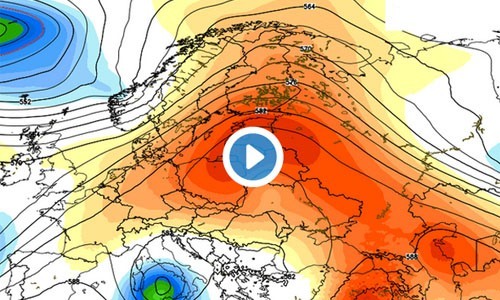

Europe
The heat has smashed records across the continent, reminding some of the devastating summer of 2003 that claimed 30,000 lives. “Europeans have been painfully aware of the dangers of extreme heat since the killer heat wave of July 2003,” said Weather.com senior meteorologist Nick Wiltgen.
“This July 2015 was the warmest July on record for Spain, Italy, Switzerland and Austria,” Dr. Jeff Masters, Weather Underground’s director of meteorology, told the website.
Eastern Europe is also seeing temperatures up to the mid-90s, when highs around 75 are more common this time of year, AccuWeather wrote. And Poland is also experiencing the mass extinction of one very unsuspecting victim: IKEA meatballs.
Record-breaking heat in Europe has forced Ikea in Poland to take meatballs off the menu. http://t.co/5Til53XFDS pic.twitter.com/EXrB2u9cWb
— Foreign Policy (@ForeignPolicy) August 11, 2015
North America
Although summer is coming to an end, many parts of the U.S. will still be baking in the sun’s rays. Some Los Angelenos, for instance, will feel temperatures in the 100s this week, the Los Angeles Times reported. Stuart Seto, a weather specialist with the National Weather Service, told the publication on Monday that while the city’s temperatures are not record-breaking, they are still about 10 degrees above average for this time of year.
Heat wave expected to bake Los Angeles by Thursday http://t.co/qdBjja2Pjs pic.twitter.com/5WQ0SLSjrq
— Los Angeles Times (@latimes) August 11, 2015
The American summer of 2015 has also been marked by destructive wildfires that have burned through the West. So far, flames have burned nearly 5 million acres (an area the size of Connecticut) in the state of Alaska. Climate Central even created an interactive map that shows in real time the active wildfires in the U.S.
Climate change?
Global warming has been suggest as one of the possible culprits of this extreme heat.
“The heat wave is still ongoing and it is premature to say whether it can be attributed to climate change or whether it is due to naturally occurring climate variability,” stated Omar Baddour, who coordinates the World Meteorological Organization’s World Climate Data and Monitoring Program.
“But climate change scenarios predict that heat waves will become more intense, more frequent and longer. It is notable that the time between major heat waves (2003, 2010 and 2015) is getting shorter,” he added.
YOU MIGHT ALSO LIKE
How to Prevent Worldwide Climate Catastrophe
11 Social Media Posts Show Reality of Extreme Weather Worldwide

 233k
233k  41k
41k  Subscribe
Subscribe 